It’s the end of COVID money. Some worry how Tri-Cities schools will spend final dollars
- Oops!Something went wrong.Please try again later.
After several months of work, Pasco School District staff and officials finally cut the ribbon this week and opened the doors to their new Digital Learning Center.
The refurbished 10,000-square-foot facility at the corner of Court Street and Road 44 will serve as the new home of the Digital Learning Academy, a consortium of four online schools remotely serving 600 students from kindergarten through high school.
“The expansion is a response to an increased demand for digital learning programs for students who thrive in a virtual or online educational setting,” said Superintendent Michelle Whitney.
“While the traditional in-person classroom continues to meet the needs of most of our students, it’s important to acknowledge that a substantial number of our students truly excel in an online environment,” she said.
The building was bought last year partly with federal COVID relief funds — Elementary and Secondary School Emergency Relief (ESSER).
Tri-City school districts have a year left to spend $27 million in emergency COVID money before they’re no longer able to.
But as school districts begin spending their final pennies, researchers are warning schools to be cautious.
They argue districts should focus more spending on programs that address pandemic-caused learning loss and education gaps instead of buying buildings.
“I think student outcomes come first and facility projects second,” Margeurite Roza, director of Edunomics Lab and research professor at Georgetown University’s McCourt School of Public Policy, told the Tri-City Herald.
When comparing 2022 scores with the national average, Pasco students are more than two grade levels behind in math and reading. Roza said that puts Pasco among the lowest achieving districts in the state.
Her organization also has raised a red flag over fears of an impending “bloodletting” — a mass nationwide layoff of school employees because districts are using COVID relief money to cover the recurring salaries of teachers and classified workers.
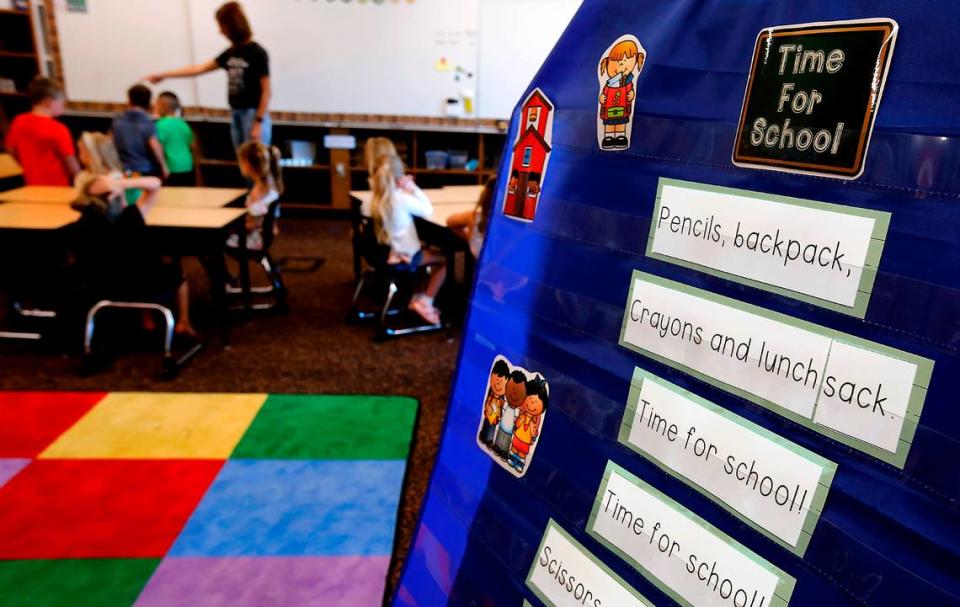
But Tri-City education leaders say they haven’t seen any evidence to suggest such sweeping layoffs here.
Spending priorities for ESSER money have shifted over the last three years.
In the early pandemic days, the funds were used to respond to the spread of COVID, pay for personal protective equipment and buttress online learning support for millions of students.
In recent months, spending has shifted to include investments in school facilities, mental health services and to combat pandemic-caused learning loss.
Pasco, for one, has invested millions in tutoring, summer school, mental health support, one-on-one counseling, as well as targeted strong, rigorous instruction and intervention programs for students needing specific assistance.
COVID, ESSER and Learning Loss
Since March 2020, more than $190 billion in ESSER funds have trickled into public schools across the country through the federal CARES Act, CRRSA Act and the American Rescue Plan.
Districts can only access the money on a reimbursement basis.
The Kennewick, Pasco and Richland school districts combined were eligible to spend $137 million in ESSER. So far, they’ve spent $110 million, or about 80% of their total allocation.
Most of that covered the salaries of existing staff, summer school teaching and tutoring opportunities, and small building improvements such as heating and air conditioning unit upgrades.
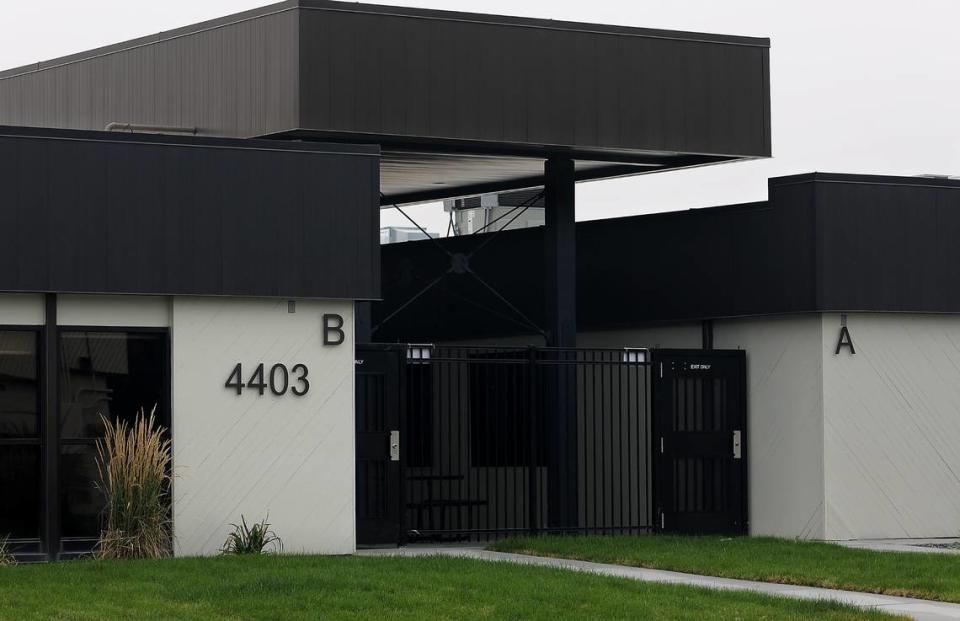
A stipulation in the third and final installment known as ESSER 3 requires districts to use at least 20% for educational programs to address learning loss as a result of students spending several months away from in-person classes.
From 2019 to 2022, Pasco students on average fell a half-grade behind on reading and math test scores, according to the Education Recovery Scorecard. Kennewick test scores also fell a half-grade behind while Richland’s were near national averages.
“(Construction) is great for next decade’s kids, but what about today’s kids?” Roza argued. “Does it do much if they can’t read or do math?”
COVID-related lockdowns — which lasted, on and off, for several months in Washington state — are still impacting student learning to this day, especially the country’s youngest learners.
One estimate from Georgetown University’s Edunomics Lab estimates it would take more than $52.5 million in math tutoring and $25.2 million in literature tutoring for Kennewick, Richland and Pasco to collectively rectify an average learning loss of three months of math instruction and two months for reading instruction.
Roza worries that a whole generation may miss out on the ability to accumulate wealth or to pursue certain career opportunities if districts aren’t more aware of the intent behind some of their ESSER spending.
“Their life values will be permanently impacted,” she said. “Being behind 2.5 years on math and reading outcomes means they’re closed off to many, many values of life.”
Nationwide, education leaders made similar regrets with funds that trickled down under the 2009 American Recovery and Reinvestment Act, which Congress passed during the Great Recession.
Spending appropriations in that law helped supplement state budget shortfalls, as well as retain and create 325,000 education jobs, but Roza said leaders were regretful about not making larger local investments to increase learning outcomes.
Nationwide layoff concern
With the final round of COVID dollars ending next year and as schools continue to struggle to return their enrollments back to pre-pandemic levels, researchers at Georgetown University are projecting layoffs beginning in the 2024-25 school year.
Enrollment is important because it’s the driver for how much money a school receives.
The number of students dictates how much money the state contributes to local school districts.
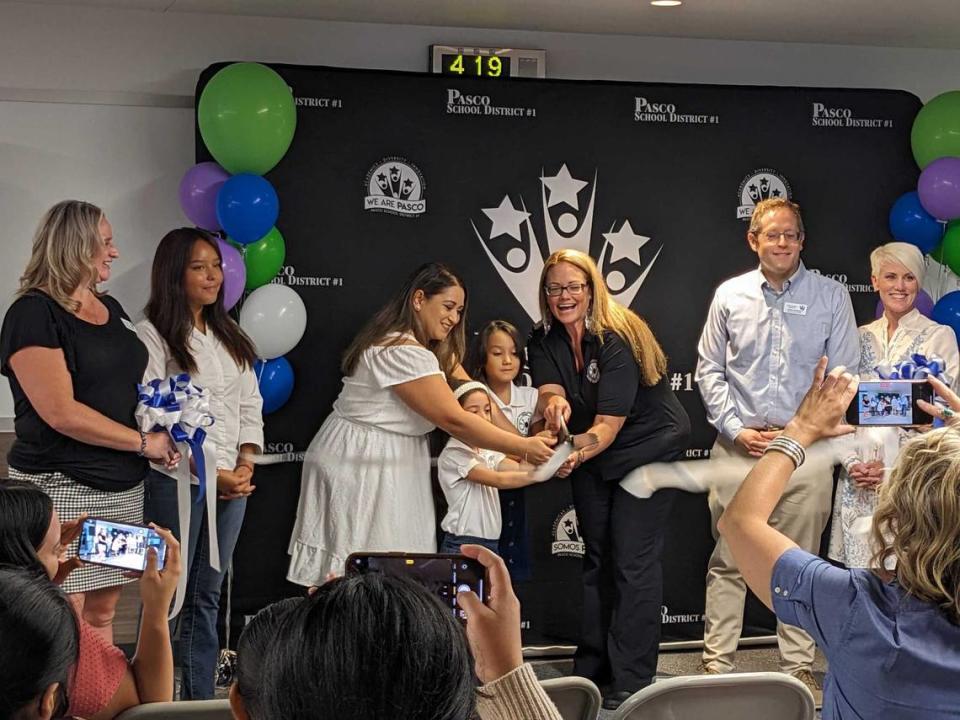
Nationally, school districts are spending about $24 billion of ESSER money annually on labor costs. That money is covering about a quarter of a million education jobs, Roza says.
Tri-City school officials aren’t expecting that to happen here. For the past decade, the number of employees in each district has mostly risen and fallen in conjunction with enrollment trends.
But Edunomics Lab researchers say higher hiring rates compared with plateauing student enrollment rates should be concerning to all school districts.
Enrollment at Richland — the smallest of the “big 3” Tri-City school districts, serving 14,000 students — has largely returned to pre-pandemic levels.
Pasco and Kennewick are still working to rebound from enrollment losses. Each district is down by about 300 full-time students.
Vic Roberts, Kennewick’s executive director of business operations, said that difference pencils out to a loss in revenue of about $3 million annually for them.
Kennewick’s budgetary future is the most uncertain. Not only has enrollment failed to rebound, but the district is using millions of dollars in ESSER annually to plug a $34 million hole that was made after local voters decided twice last year to not renew the district’s educational programs and operations levy. Things will get a bit better next year, though, as the district resumes collecting its local levy.
The district also is tapping into its reserves to fill the gap, but will still bleed about $5 million to $10 million annually over the next four years due to the levy failure of last year.
The district has not had to make cuts to staff yet, but has reduced program spending on things such as new curricula.
“Riding it out until the next levy in 2026 is going to be a challenge. But, you see, districts all throughout the state are really in that same boat. So we’re really trying to do all we can to get through the next couple years,” Roberts said.
Layoffs could come during the 2024-25 school year, but those would be less a result of ESSER money expiring and more because of lost levy funds and recent hiring to keep class sizes smaller.
“With the passage of the 2023 levy, we will again be collecting levy dollars in the 2024 calendar year,” said Superintendent Traci Pierce in a written statement. “Over the next year we will need to manage the budget carefully, monitor enrollment, and continue to advocate for additional state funding in areas that the state underfunds.”
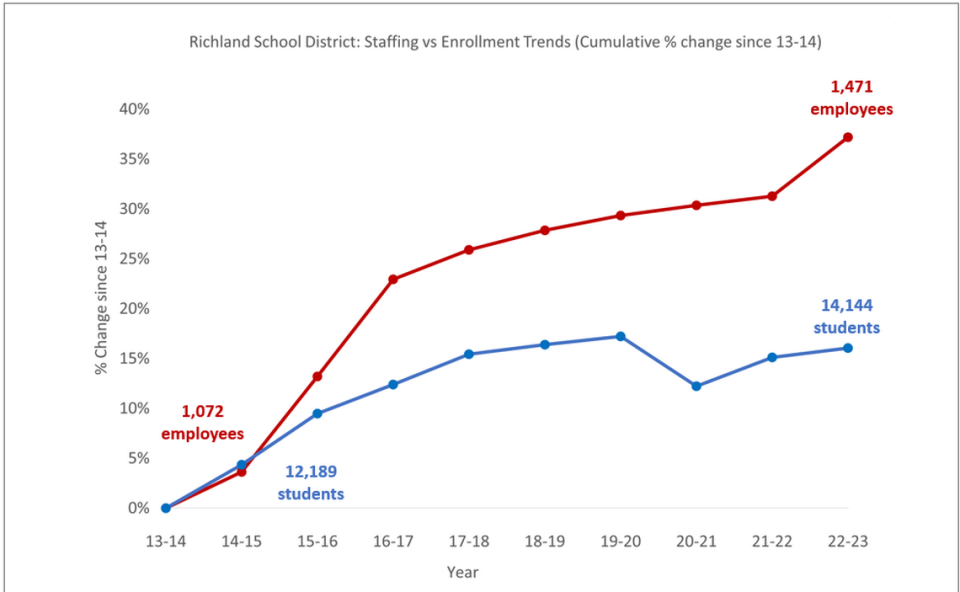
Richland’s ESSER 3 spending
Richland has spent nearly all of the $13.6 million in ESSER 3 that it’s eligible to receive. The third installment made up more than half of the total $21.2 million it has been eligible to spend.
Here’s how the district is spending that money this year:
$5.7 million to retain teachers and staff members, and keep class sizes small.
$2.75 million is going to the district’s Mental Health Assistance Team, which was established in 2020 to do threat assessment, suicide prevention, mental health and social-emotional learning strategies and training.
$811,000 for special education learning loss measures and progress monitoring.
$700,000 has been used to fund summer school from 2022-24.
$575,000 to upgrade and replace HVAC systems.
$270,000 for special education support at Pacific Crest Online Academy. About 30 students at the school need special education services, and the number continues to rise. These funds would go toward Presence Learning, a contractor that provides online staff to address special education needs.
$150,000 to address building-level learning loss. These funds will act as a pool for individual building requests to support “outside-the-box” efforts to support student learning. This could include extended day or extended year programs.
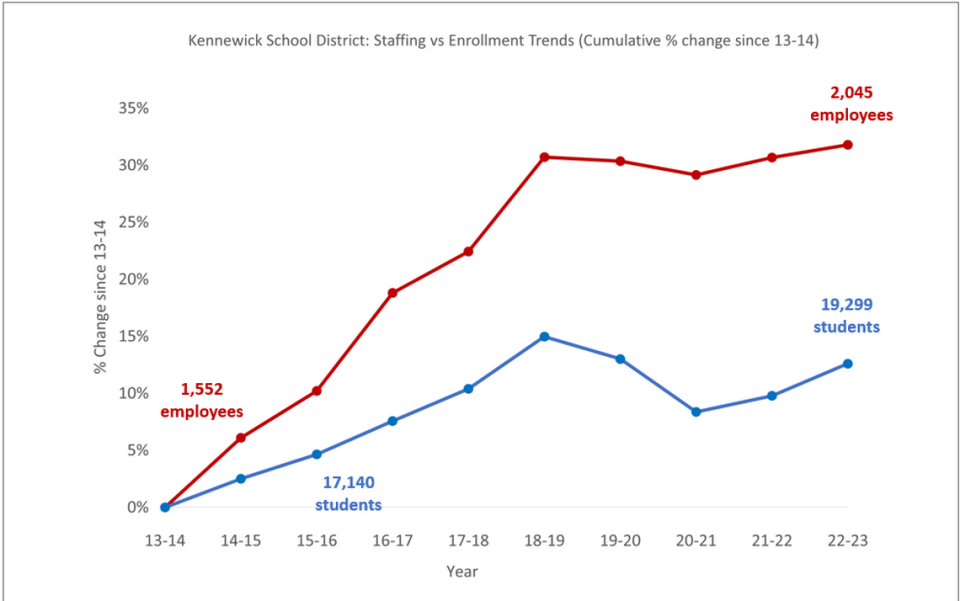
Kennewick’s ESSER 3 spending
Kennewick is eligible to spend $37.6 million total in ESSER 3 and has roughly $20 million of the COVID funds left to spend. Most of that will be used to cover staffing that would otherwise be funded with levy dollars.
Here’s how the district plans to spend ESSER 3 this school year:
$11 million will be used to maintain staffing needs due to loss of levy funds.
$1.475 million various other eligible costs and overhead.
$850,000 for student tutoring to address learning loss.
$850,000 for the continuation of remote learning applications and licensing costs.
$825,000 for mental health services.
The school district has about $7.5 million in learning loss specific funds it plans to use for tutoring, mental health programs and mathematics curriculum adoption, among other things, Roberts said.
The district might also use some of its ESSER to fund summer school, but that will depend on the availability of other funds.
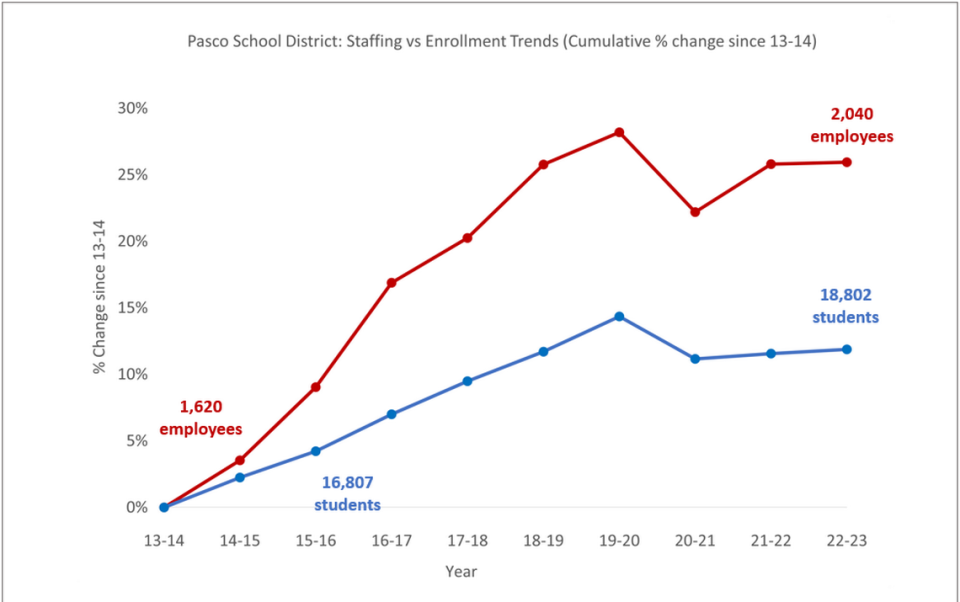
Pasco’s ESSER 3 spending
Pasco has spent $30 million of its $36.7 million in ESSER 3 allocations.
The district hasn’t updated the spending amounts on its website in a while, but what’s available paints a picture of what the district is prioritizing in its final months with the federal funds. Here’s how the district is spending ESSER 3 this year:
$8.2 million to cover existing staff, including health aides, summer school teachers, additional work, and for staff at the Digital Learning Academy.
$1.1 million to buy educational technology supplies.
$1 million to cover indirect costs brought on by ESSER spending, operational costs for school, communications support, and rental costs for storage facilities.
$300,000 to expand AVID, a college readiness support system for students to increase their awareness of, and access to, college and career success.
$70,000 for supplies.
$50,000 for virtual instructional software.
$47,000 to mount projectors to ceilings in portable buildings.
Of the $36.7 million, $7.3 million has to be spent on learning loss. And Pasco has used only $3.6 million of that so far.
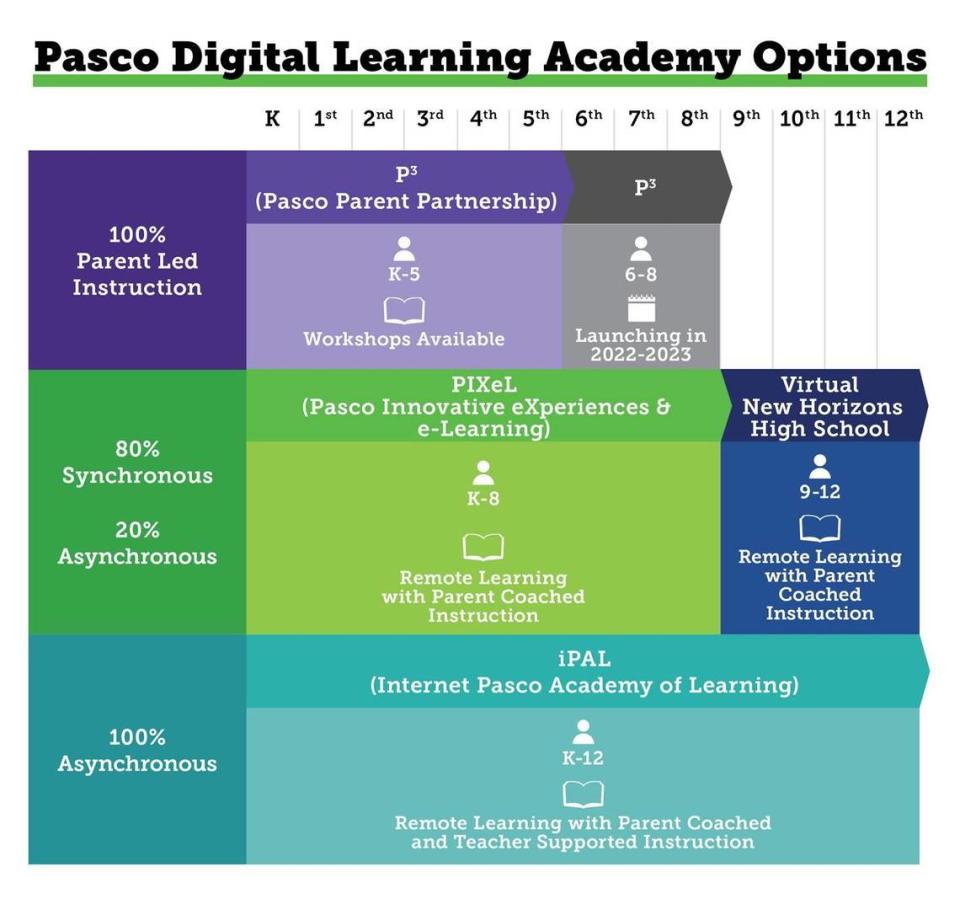
Learning loss funds will cover:
$2.5 million for additional staff costs to address learning loss.
$490,000 for supplemental tutoring services for students.
$289,000 to cover indirect costs.
$255,000 for the Hazel Health one-on-one student counseling services.
$100,000 for staff training for AVID and professional development.

